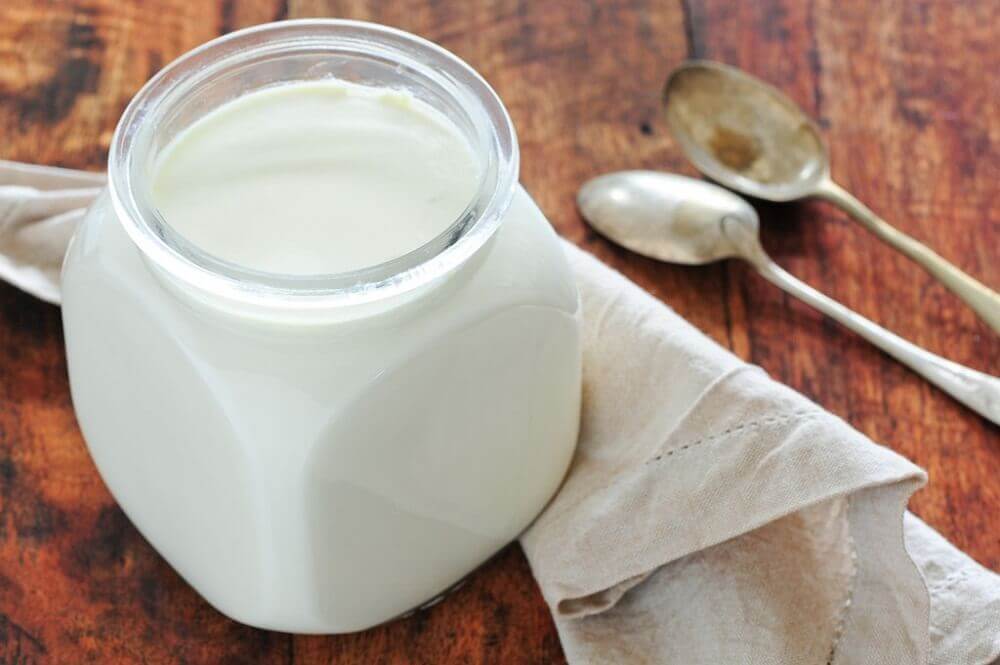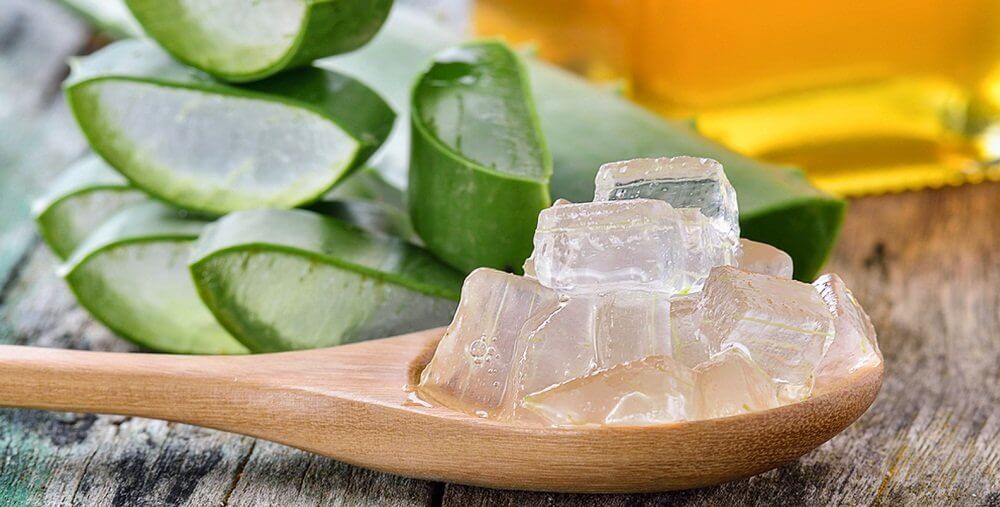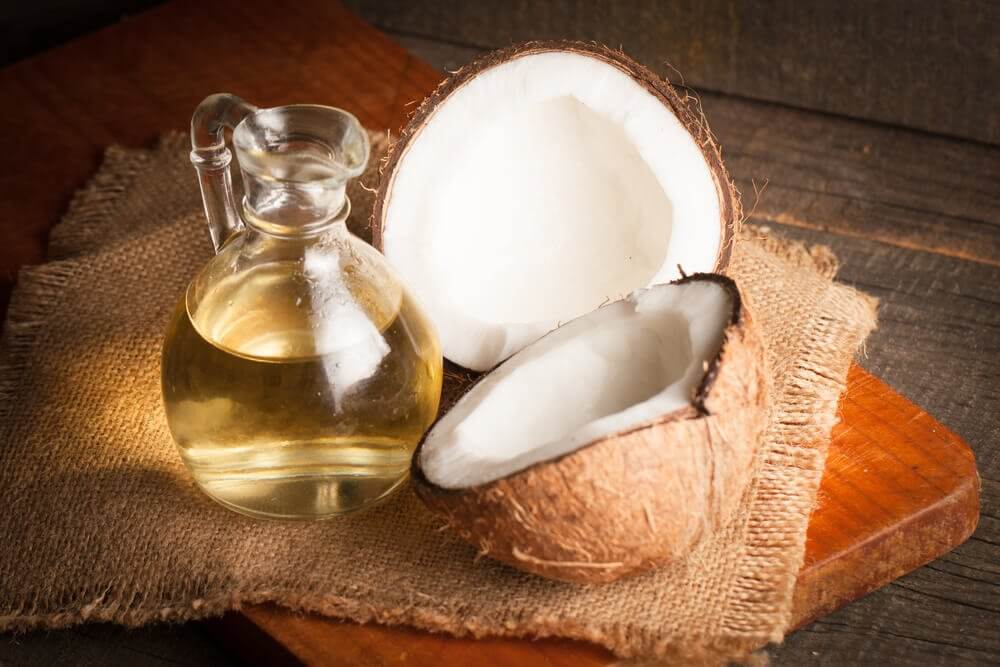Fight Fungus With These 5 Natural Solutions

Infections from fungus of the skin is produced by an excess growth of dermatophytes, yeast, and other types of micro-organisms that attack when the immune system is compromised. It’s a common problem that manifests itself with the appearance of white and red blotches. These can be accompanied with a rough texture, itching and redness.
This is considered an aesthetic problem because of how it appears. However, beyond this, it can be a warning of sensitivity and skin infections, which need interventions.
The good news is that there are a number of solutions of natural origin. Due to their properties, they detain the growth of fungus while controlling the symptoms caused by their proliferation.
In this article, we would like to share in detail the 5 best treatments when you notice a sign of infection.
Take note!
1. Natural yogurt and honey

A mixture of natural yogurt and honey provides a remedy rich in probiotics, enzymes, and organic acids that help regulate the pH of the skin.
Its compounds detain the growth of fungus and promote the balance of healthy bacteria to increase defenses.
Ingredients
• 3 tablespoons of natural yogurt
• 1 tablespoon of honey
Preparation
• Stir together the honey and yogurt in a bowl
Application
• Rub the remedy over the areas affected and allow it to sit for 20 minutes.
• Rinse with warm water and repeat twice a day.
To know more read: 6 Ways to Use Natural Yogurt as a Homemade Remedy
2. Sea salt and rose water
A natural exfoliate of sea salt and rose water can aid in the elimination of dead cells that are retained in the affected areas.
It anti fungal qualities combat the dermatophytes and yeast, avoiding the generation of other complications of skin health.
Ingredients
• 2 tablespoons of sea salt
• 4 tablespoons of rose water
Preparation
• Put the sea salt in a container and moisten it with the rose water.
Application
• Rub the remedy on the affected area with circular massages and let it sit for 20 minutes.
• Rinse and use until it’s better
3. Aloe vera and oil of oregano

The pulp of aloe vera is one of the best natural remedies for infections of the skin. Its hydrating compounds, antifungals and antimicrobials accelerate the healing of infections.
In this way we strengthen the effects with the prodigious oil of oregano, an ingredient rich in antioxidants and fatty acids that promote the regeneration process.
Ingredients
• 3 tablespoons of aloe vera gel
• 1 teaspoon of oregano oil
Preparation
• Combine the gel with the oregano oil.
Application
• Rub the remedy over the fungus and allow it to sit for 30 minutes.
• Rinse with warm water and repeat its use twice a day.
4. Garlic and olive oil
Combining an antimicrobial and antimicotic paste with garlic and olive oil we can counteract the irritation of the skin due to the uncontrolled growth of fungus and bacteria.
Its properties detain the development of infection and hydrate the tissues that are affected by these microorganisms.
Ingredients
• 2 cloves of fresh garlic
• 3 tablespoons of olive oil
Preparation
• Mash the garlic until you obtain a paste
• Add the olive oil and stir until it is well mixed.
Application
• Spread the treatment on the fungus and let it sit for 20 minutes.
• Rinse with warm water, and if necessary, apply twice a day.
See this article: 5 Treatments to Care for the Skin with Olive Oil
5. Coconut oil and lemon juice

Coconut oil and lemon juice is a remedy with essential nutrients that help to destroy Candida and other types of fungus.
It’s caprilic acid changes the environment that requires these organisms to proliferate, detaining the spread of infection.
Ingredients
• 3 tablespoons of organic coconut oil
• 2 tablespoons of lemon juice
Preparation
• Mix the organic coconut oil with the lemon juice.
Application
• Apply on the affected area and massage in until well absorbed.
• Let sit for 30 minutes and rinse with lots of water.
• Use each night before going to bed.
Note: Avoid exposing your skin to the sun while using this remedy. Lemon causes sensitivity that increases the risk of spots from UV rays.
Do you notice any change that alerts you to fungus on the skin? Prepare one of the remedies we mention and treat the skin with it for a fast cure.
All cited sources were thoroughly reviewed by our team to ensure their quality, reliability, currency, and validity. The bibliography of this article was considered reliable and of academic or scientific accuracy.
- McCarty, T. P., & Pappas, P. G. (2016). Invasive Candidiasis. Infectious Disease Clinics of North America. https://doi.org/10.1016/j.idc.2015.10.013
- Delavenne, E., Cliquet, S., Trunet, C., Barbier, G., Mounier, J., & Le Blay, G. (2015). Characterization of the antifungal activity of Lactobacillus harbinensis K.V9.3.1Np and Lactobacillus rhamnosus K.C8.3.1I in yogurt. Food Microbiology. https://doi.org/10.1016/j.fm.2014.04.017
- Israili, Z. H. (2014). Antimicrobial properties of honey. American Journal of Therapeutics. https://doi.org/10.1097/MJT.0b013e318293b09b
- Rosca-Casian, O., Parvu, M., Vlase, L., & Tamas, M. (2007). Antifungal activity of Aloe vera leaves. Fitoterapia. https://doi.org/10.1016/j.fitote.2006.11.008
- Li, W. R., Shi, Q. S., Liang, Q., Huang, X. M., & Chen, Y. Ben. (2014). Antifungal effect and mechanism of garlic oil on Penicillium funiculosum. Applied Microbiology and Biotechnology. https://doi.org/10.1007/s00253-014-5919-9
- Ogbolu, D. O., Oni, A. A., Daini, O. A., & Oloko, A. P. (2007). In Vitro Antimicrobial Properties of Coconut Oil on Candida Species in Ibadan, Nigeria. Journal of Medicinal Food. https://doi.org/10.1089/jmf.2006.1209
This text is provided for informational purposes only and does not replace consultation with a professional. If in doubt, consult your specialist.








